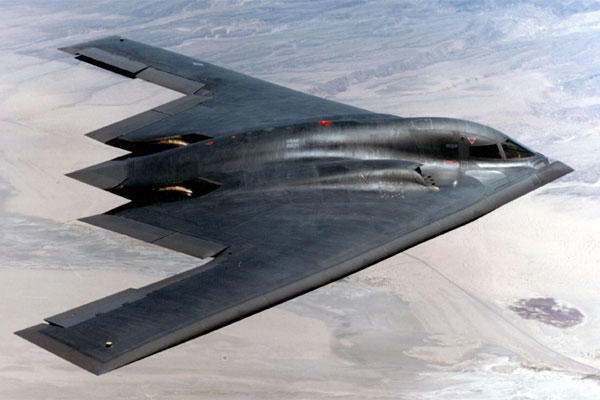Rarely used Air Force B-2 Spirit stealth bombers carried out massive strikes against two ISIS camps in Libya on Wednesday in what was almost certainly the last combat mission specifically authorized by President Barack Obama.
Defense Secretary Ashton Carter, who had given what were billed as his final remarks as Pentagon chief on Wednesday, made a surprise appearance in the Pentagon press room Thursday to confirm the B-2 mission that Air Force figures showed cost well in excess of $11 million.
He brushed off speculation that the strikes were intended by the outgoing administration to send a message to Russia and China that the U.S. retained the ability to strike anywhere in the world on short notice, or to offset criticism by President-elect Donald Trump of U.S. military readiness.
Carter said that other aircraft in the region could have carried out the Libya strikes -- "there were other options" -- but U.S. commanders decided that the B-2s were "the best capability to use."
U.S. Africa Command requested the B-2 strikes, the Pentagon approved them, and Obama gave his authorization "in the past few days," Carter said. The strikes also had the approval of the U.S. and United Nations-backed Government of National Accord in Libya, he added.
Obama's authorization was necessary since the strikes hit targets about 28 miles southwest of the Libyan port city of Sirte, which had been held by the Islamic State of Iraq and Syria and fell last month after a long siege to the forces of the GNA. U.S. airstrikes previously had been limited to the Sirte area.
ISIS fighters described by defense officials as "squirters" from Sirte fled to the two camps, where their leaders were plotting terror attacks against Europe, Carter said. Using another acronym for ISIS, he said of the B-2 strikes, "It's always been part of our campaign to destroy ISIL wherever we find it, so this is a continuation of the plan."
"Initial estimates indicate that the airstrikes killed more than 80 ISIL fighters, many of whom had converged there after fleeing from local partnered forces who had cleared Sirte last month with our help," Carter said.
Just before the B-2s attacked, "The militants were seen immediately beforehand carrying weapons, wearing tactical vests, carrying mortars, and standing in formation," a defense official said.
The B-2s together dropped about a hundred 500-pound precision-guided bombs, or Joint Direct Attack Munitions (JDAMs). The B-2 strikes were followed up by an MQ-9 Reaper unmanned aerial vehicle firing Hellfire missiles, said Col. Pat Ryder, an Air Force spokesman.
Although the two stealth aircraft dropped 100 bombs, the mission could not be characterized as "carpet bombing," Ryder said, since precision munitions were used. "It's not carpet bombing in that sense."
The B-2s, each with a 40,000-pound payload, flew a 34-hour, round-trip mission from Whiteman Air Force Base, Missouri, and were refueled a total of 15 times on the trip, Ryder said.
According to Air Force fact sheets, a B-2 costs $130,000 an hour to operate and the kits for the JDAMS cost more than $22,000 each. That would put the cost of the mission at more than $11 million, not counting the refueler flights and the costs of the Hellfire missiles.
Ryder echoed Carter in saying that the choice of the B-2s was not intended to send any particular message but was made because of the loiter time the B-2s have over a target and to "give commanders more flexibility." However, "anytime we use it [the B-2], there's certainly a message there. It sends the message to ISIL that we can reach out to you wherever you are in the world."
The Air Force has 20 B-2 bombers costing $1.1 billion apiece in its inventory, and all are based at Whiteman, Ryder said. The strikes Wednesday marked only the fifth time they have been used in combat since becoming operational in the 1990s.
The previous four B-2 missions were:
- March 1999, Operation Allied Force against Serbia;
- September 2001, in the first strikes of Operation Enduring Freedom in Afghanistan;
- March 2003, at the start of Operation Iraqi Freedom; and
- March 2011, Operation Odyssey Dawn in Libya to topple the regime of Moammar Gadhafi.
-- Richard Sisk can be reached at Richard.Sisk@Mililtary.com.























